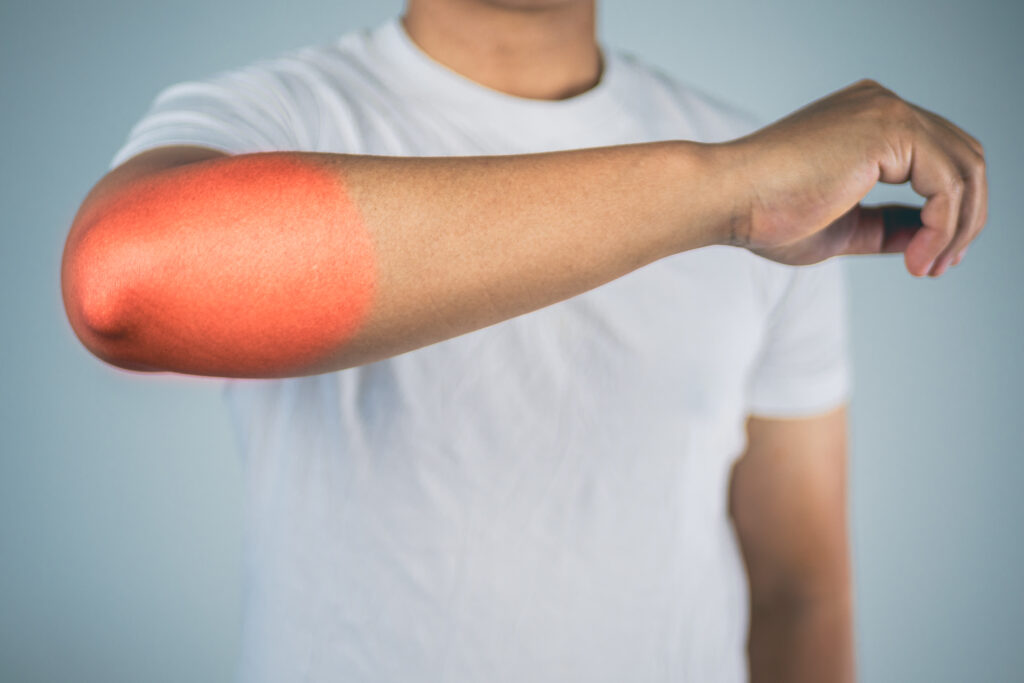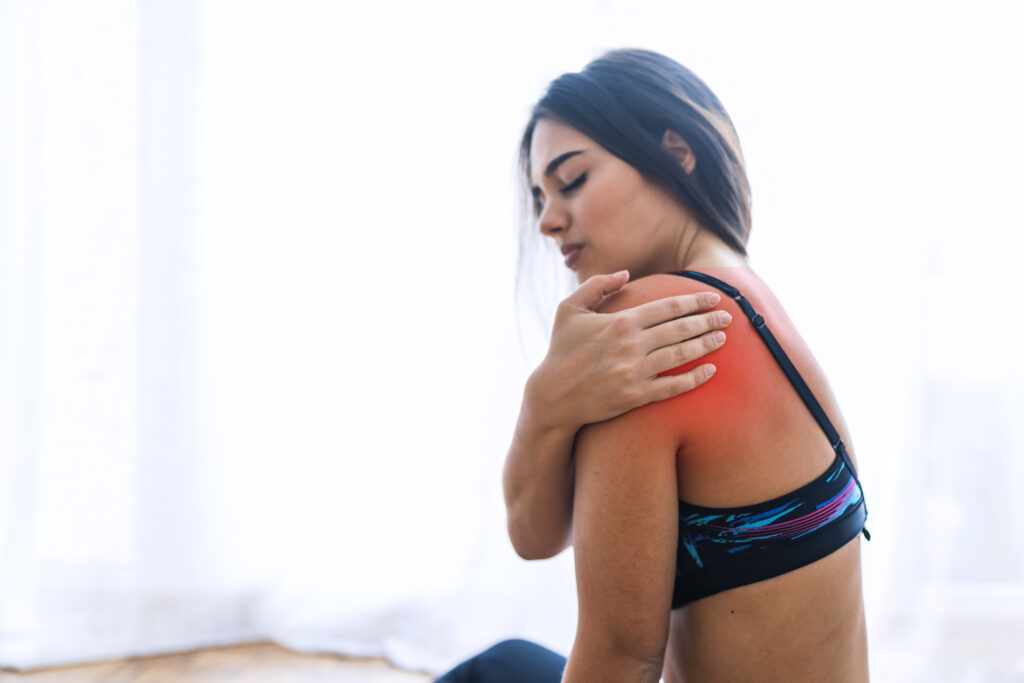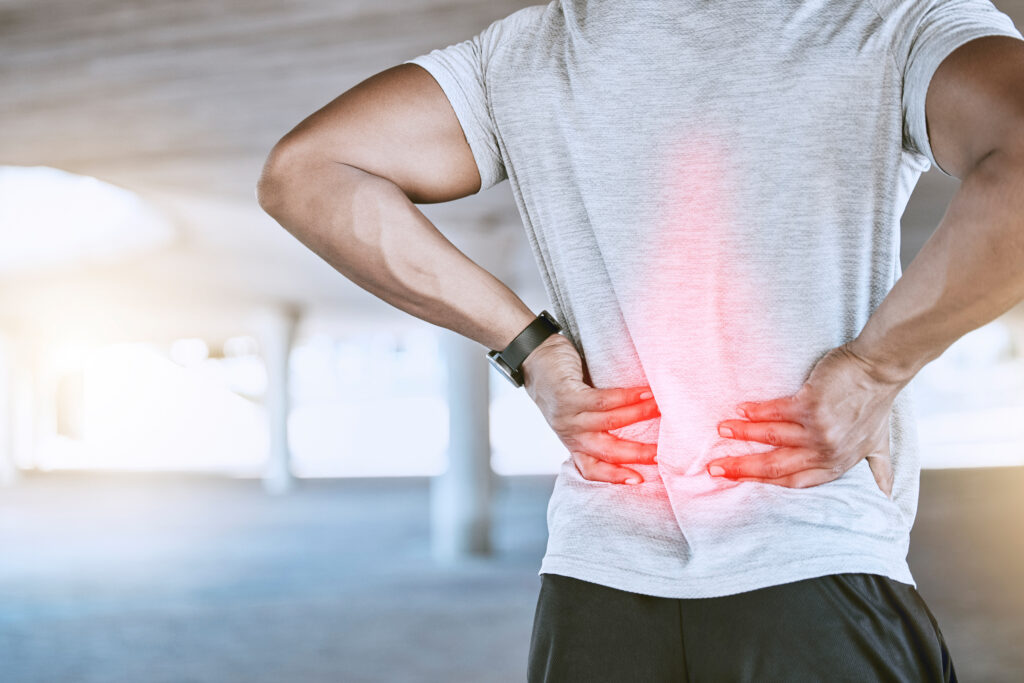In the modern world, desk work has become an integral part of our daily lives. Whether you’re an office professional, a remote worker, or a student, you likely spend a significant portion of your day sitting at a desk, typing away on a keyboard, and using a computer mouse. While this sedentary lifestyle has its own set of health challenges, one specific issue that desk workers may face is Golfer’s Elbow, also known as medial epicondylitis.
Golfer’s Elbow is a condition that causes pain and inflammation on the inner side of the elbow, and it can be quite debilitating. While it’s commonly associated with golfers due to the repetitive swinging motion involved in the sport, it can affect anyone, including desk workers, who engage in repetitive arm and wrist movements. The good news is that you can take proactive steps to prevent Golfer’s Elbow or alleviate its symptoms if you’re already experiencing them. In this comprehensive guide, we will explore ergonomic strategies that desk workers can implement to avoid Golfer’s Elbow and maintain optimal arm health.
Understanding Golfer’s Elbow: Causes and Symptoms
Golfer’s Elbow, known medically as medial epicondylitis, is a painful condition that affects the tendons on the inside of the elbow. This condition shares similarities with its counterpart, Tennis Elbow (lateral epicondylitis), but affects the opposite side of the forearm. Here, we’ll delve into the causes and symptoms of Golfer’s Elbow.
Causes of Golfer’s Elbow
- Repetitive Movements
The primary cause of Golfer’s Elbow is the repetitive stress placed on the tendons that control wrist and finger flexion. Desk workers who frequently type, use a computer mouse, or engage in activities that involve gripping and lifting are at risk.
- Poor Ergonomics
Incorrect desk setup can contribute to Golfer’s Elbow. A workstation that doesn’t promote proper wrist and arm alignment can put excessive strain on the tendons.
- Overuse and Overexertion
Overusing the forearm muscles without adequate rest and recovery can lead to Golfer’s Elbow. This often occurs when desk workers push themselves too hard or fail to take regular breaks.
- Improper Technique
Using incorrect techniques while performing physical tasks, such as lifting heavy objects with a bent wrist, can increase the risk of developing Golfer’s Elbow.
Symptoms of Golfer’s Elbow
Golfer’s Elbow typically manifests with the following symptoms:
- Pain
The most common symptom is pain on the inside of the elbow, which may radiate down the forearm.
- Weakness
Weakened grip strength can occur, making it difficult to grasp objects firmly.
- Tenderness
The affected area may be tender to the touch.
- Stiffness
Stiffness in the elbow and forearm can develop, particularly in the morning.
- Numbness and Tingling
Some individuals may experience numbness or tingling sensations in the fingers.
Now that we have a clear understanding of what Golfer’s Elbow is and what causes it, let’s explore ergonomic strategies that desk workers can implement to prevent this painful condition.
Ergonomic Strategies to Prevent Golfer’s Elbow
Preventing Golfer’s Elbow starts with optimizing your workspace and adopting healthy habits that reduce strain on your arms and wrists. Here are some ergonomic strategies to help desk workers avoid Golfer’s Elbow in Lake Geneva:
1. Ergonomic Workstation Setup
a. Proper Desk and Chair Height: Ensure that your desk and chair are set at appropriate heights to maintain a 90-degree angle at your elbows and wrists. Your feet should be flat on the floor, and your monitor should be at eye level to prevent excessive bending of your neck.
b. Keyboard and Mouse Placement: Use an ergonomic keyboard and mouse that allow for a natural wrist position. Keep your keyboard and mouse close enough so that you don’t need to reach or extend your arms.
c. Wrist Support: Consider using wrist rests or ergonomic keyboards with built-in wrist support to maintain a neutral wrist position while typing or using the mouse.
d. Monitor Position: Position your monitor at eye level and directly in front of you to reduce the need for neck and head movement. Use a monitor stand or adjustable arm if necessary.
2. Frequent Breaks and Stretching
a. Microbreaks: Take short, frequent breaks throughout the day to rest your wrists and arms. Set reminders to stand up, stretch, and move around every 30 minutes.
b. Stretching Exercises: Perform regular wrist and forearm stretches to maintain flexibility and reduce tension in the tendons. Simple exercises like wrist flexor and extensor stretches can be effective.
c. Strengthening Exercises: Incorporate forearm strengthening exercises into your routine to build muscle support around the affected area. This can help prevent Golfer’s Elbow and aid in recovery if you’re already experiencing symptoms.
3. Proper Typing Technique
a. Typing Posture: Maintain a neutral wrist position while typing. Avoid excessive wrist extension or flexion, as this can strain the tendons.
b. Typing Technique: Type with a light touch, and use proper finger placement on the keyboard. Avoid pounding the keys forcefully, which can increase strain on the forearm muscles.
c. Ergonomic Keyboards: Consider using ergonomic keyboards that are designed to reduce wrist strain by promoting a more natural hand position.
4. Ergonomic Accessories
a. Ergonomic Chair: Invest in an ergonomic chair that provides proper lumbar support and adjustable armrests. This helps maintain a comfortable and healthy sitting posture.
b. Ergonomic Mouse and Mousepad: Use an ergonomic mouse that fits your hand comfortably. A mousepad with wrist support can also alleviate strain.
c. Adjustable Desk: If possible, opt for a sit-stand desk that allows you to switch between sitting and standing positions throughout the day. Standing periodically can reduce the strain on your wrists and elbows.
5. Monitor Your Symptoms
Pay attention to any early signs of discomfort or pain in your wrists and forearms. If you notice symptoms of Golfer’s Elbow, address them promptly by adjusting your workstation setup and incorporating preventive measures.
Stretching and Strengthening Exercises for Golfer’s Elbow Prevention
In addition to ergonomic strategies, incorporating specific stretching and strengthening exercises into your routine can be highly effective in preventing Golfer’s Elbow. These exercises help improve flexibility and build strength in the forearm muscles, reducing the risk of injury. Here are some exercises to consider:
- Stretching Exercises
Wrist Flexor Stretch: Extend your arm in front of you with your palm facing up. Use your opposite hand to gently pull back on your fingers until you feel a stretch in the forearm. Hold for 15-30 seconds and repeat on both arms.
- Wrist Extensor Stretch: Extend your arm in front of you with your palm facing down. Use your opposite hand to gently pull back on your fingers until you feel a stretch in the top of the forearm. Hold for 15-30 seconds and repeat on both arms.
- Forearm Pronation and Supination: Hold a small weight or a water bottle in your hand with your elbow bent at 90 degrees. Slowly rotate your forearm to move your palm from facing down to facing up and vice versa. Perform 10-15 repetitions on each arm.
- Strengthening Exercises
- Wrist Flexor Exercise: Hold a light dumbbell or a resistance band with your palm facing up. Rest your forearm on a flat surface and bend your wrist upward, then slowly lower it. Perform 2-3 sets of 10-15 repetitions on each arm.
- Wrist Extensor Exercise: Hold a light dumbbell or a resistance band with your palm facing down. Rest your forearm on a flat surface and bend your wrist upward against resistance, then slowly lower it. Perform 2-3 sets of 10-15 repetitions on each arm.
- Grip Strengthener: Use a grip strengthener or stress ball to work on strengthening your grip. Squeeze and release the ball repeatedly for 2-3 sets of 15-20 repetitions on each hand.
Remember to start with light resistance and gradually increase it as your strength improves. If you experience any pain during these exercises, stop immediately and consult a healthcare professional.
Chiropractic Adjustments for Golfer’s Elbow in Lake Geneva
Chiropractic adjustments, also known as spinal or joint manipulations, are a common treatment approach used by chiropractors to address various musculoskeletal conditions, including Golfer’s Elbow at Spinal Rehabilitation Center of Lake Geneva. While chiropractic care may be effective for some individuals, it’s essential to understand how these adjustments work and what you can expect if you decide to seek chiropractic treatment for Golfer’s Elbow.
How Chiropractic Adjustments Work
Chiropractors are healthcare professionals who specialize in diagnosing and treating disorders of the musculoskeletal system, particularly the spine and joints. They employ a hands-on, manual approach to chiropractic care, with the primary goal of restoring proper alignment and function to the body’s joints and supporting structures.
Here’s how chiropractic adjustments work:
- Assessment: A chiropractor will begin by conducting a thorough evaluation of your condition. This may involve a physical examination, reviewing your medical history, and possibly ordering diagnostic imaging like X-rays.
- Identification of Misalignments: The chiropractor will identify any misalignments or subluxations in the spine or other affected joints. These misalignments are believed to interfere with the body’s natural ability to heal itself and can contribute to conditions like Golfer’s Elbow.
- Manual Adjustments: Using precise, controlled force, the chiropractor will apply a quick, gentle thrust to the affected joint to restore proper alignment. This is known as a chiropractic adjustment.
- Pain Reduction and Improved Function: The goal of the adjustment is to reduce pain, improve joint function, and enhance the body’s ability to heal naturally. By correcting misalignments, chiropractic adjustments aim to alleviate stress on the surrounding muscles, tendons, and nerves.
Chiropractic Adjustments for Golfer’s Elbow
Chiropractic care can be beneficial for some individuals with Golfer’s Elbow. Here’s how chiropractic adjustments may specifically address this condition:
1. Joint Mobilization
Chiropractors can perform joint mobilization techniques on the elbow and wrist joints affected by Golfer’s Elbow. These gentle movements help improve range of motion, reduce stiffness, and relieve tension in the affected area.
2. Soft Tissue Techniques
In addition to joint adjustments, chiropractors often use soft tissue techniques to address Golfer’s Elbow. These may include:
- Myofascial Release: This involves applying pressure to the fascia (connective tissue) to release tension and improve circulation.
- Massage Therapy: Massage can help relax tight muscles around the elbow and forearm, reducing pain and inflammation.
- Trigger Point Therapy: Chiropractors may locate and apply pressure to trigger points (localized areas of muscle tension) to release muscle knots and improve blood flow.
3. Postural Assessment
Chiropractors consider your overall posture when treating Golfer’s Elbow. Poor posture can contribute to the condition, so a chiropractor may provide guidance on improving your sitting and standing posture to reduce strain on the affected area.
4. Ergonomic Advice
Chiropractors often offer ergonomic advice tailored to your specific needs. They can recommend adjustments to your workstation setup and provide guidance on proper body mechanics to prevent further strain on the affected area.
5. Lifestyle Recommendations
Beyond in-office treatments, chiropractors may suggest lifestyle modifications, exercises, stretches, and dietary changes to support your overall health and well-being. These recommendations can complement chiropractic adjustments and Golfer’s Elbow management.
Chiropractic Care & Golfer’s Elbow in Lake Geneva
In Lake Geneva, finding relief from Golfer’s Elbow is made accessible and effective through the expert chiropractic care provided by Spinal Rehabilitation Center of Lake Geneva. Our chiropractors specialize in personalized treatments for Golfer’s Elbow, employing a combination of targeted adjustments, soft tissue techniques, and ergonomic guidance to alleviate pain and enhance joint function. With a focus on individualized care and a multidisciplinary approach, Spinal Rehabilitation Center of Lake Geneva is committed to helping our clients regain their quality of life. If you’re seeking professional chiropractic care for Golfer’s Elbow in Lake Geneva, contact us at (262) 248-4105 to schedule your consultation and take the first step toward a pain-free, active lifestyle.




